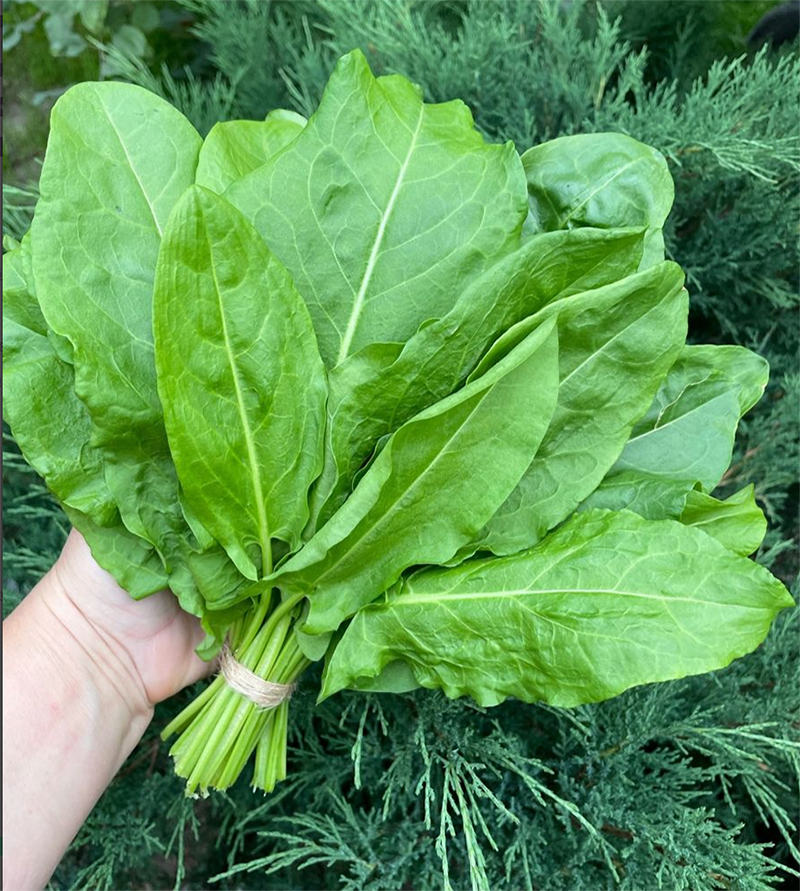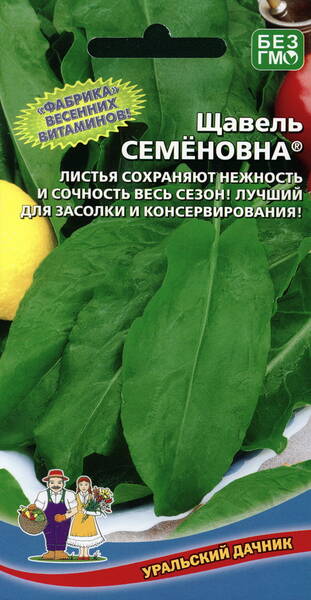The leaves remain tender and juicy all summer long!
Perennial, cold-resistant plant. Early ripening, high-vitamin variety.
The leaves are ovate, light green, slightly or medium vesicular, with a smooth or slightly wavy edge, large, juicy and tender.
Value of the variety: resistance to stemming, high content of vitamins, frost resistance.
They are used as early vitamin greens in cooking, for preparing first courses, fillings for pies, in salads, and canned and salted for winter use.

* Sorrel is rich in vitamin C, calcium, potassium, magnesium and oxalic acid.
Sorrel is a rich source of vitamins C and A. Just 10 sorrel leaves are enough to meet the body’s daily need for these vitamins.
Sorrel contains folic acid, which stabilizes DNA and fights cancer.
Sorrel is a source of calcium, potassium and magnesium.
The downside of sorrel is that it contains oxalic acid, which, when combined with calcium, can form kidney stones. Therefore, sorrel is absolutely contraindicated for people suffering from urolithiasis.
By the way, sorrel is a champion in terms of oxalic acid content: it contains more of it than spinach and 25 times more than parsley. But the younger the sorrel, the less oxalic acid it contains.
If you grow sorrel on your site, then try to collect it before July 1 - the longer the sorrel grows, the more oxalic acid accumulates in it.
How to store:
1. Wash fresh sorrel, dry it with a paper towel, place it in a glass of water and store for 1-2 days.
2. Wash the sorrel, dry it with a paper towel, place it in a vacuum container or special cling film and store it in the freezer for about a year.
3. Dry and chop the sorrel leaves - and then add them as a seasoning to all kinds of dishes.
How to cook:
Treat sorrel as a seasoning and do not overuse it. Add sorrel to salads. If you like sorrel soup, then prepare it correctly to get the maximum dose of vitamin C:
- before starting cooking, boil the water for the soup for 5 minutes - this is necessary so that oxygen, which is the main destroyer of vitamin C, comes out of the water;
- then throw a pinch of salt into the water - it will displace the remaining oxygen;
- add sorrel to the soup 5 minutes before the end of cooking - and then the destruction of vitamin C will be minimal.
With all this, the reduction in the amount of oxalic acid during cooking will be insignificant, by about 5-15%.











